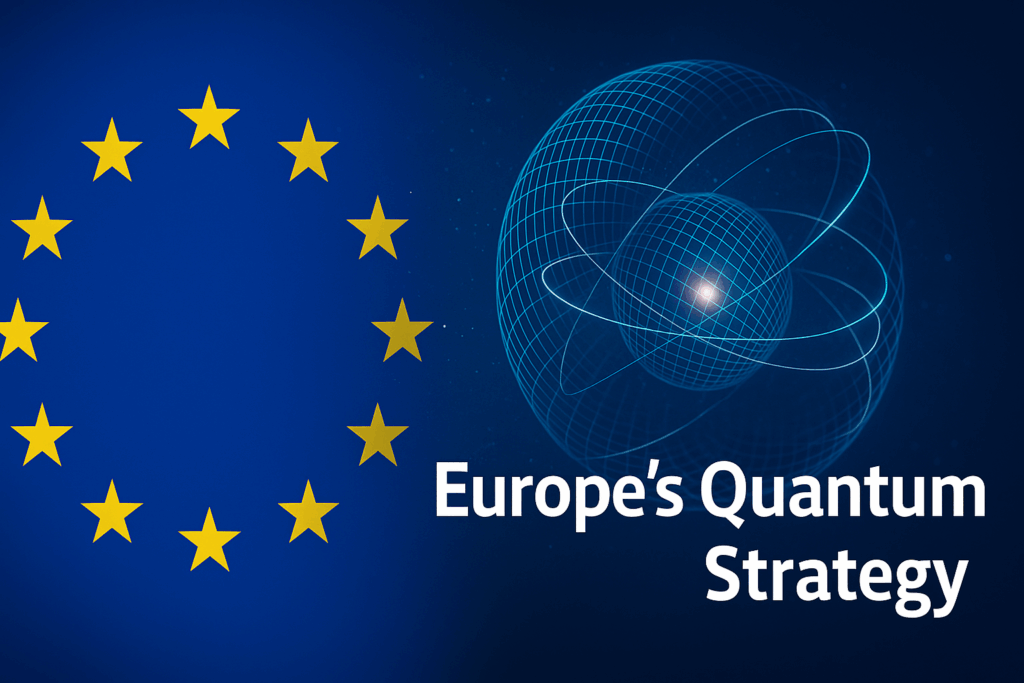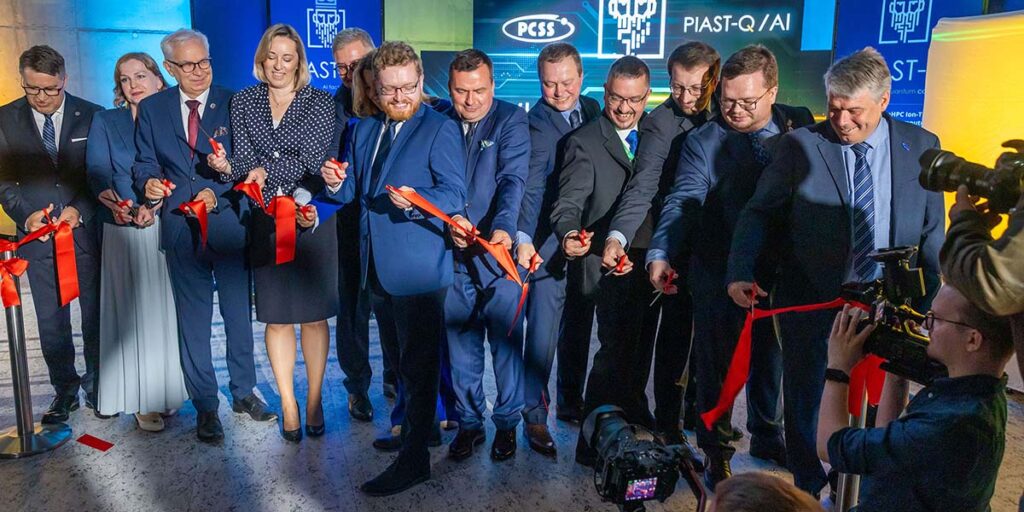Insider Brief
- Quantum Corridor representatives said the organization launched one of the fastest, most secure fiber-optic networks in the Western Hemisphere.
- It’s first transmissions from the Chicago ORD 10 Data Center to a data center in Hammond, Indiana was reportedly 1,000 times faster than traditional networks.
- The Quantum Corridor will continue to expand its mileage and connect research facilities over the next nine months.
PRESS RELEASE — Quantum Corridor launched one of the fastest, most secure fiber-optic networks in the Western Hemisphere recently with its first transmissions from the Chicago ORD 10 Data Center at 350 E. Cermak Rd. to a data center in Hammond, Indiana. At a speed 1,000 times faster than traditional networks, Quantum Corridor’s network will enable regional businesses and institutions to achieve breakthroughs in defense, financial modeling, biotech, cybersecurity, machine learning, research and more. This comes on the heels of the Biden-Harris administration’s Oct. 23 designation of the Chicago MSA as a U.S. Regional Technology and Innovation Hub.
Formed in 2021 as a public-private partnership with the state of Indiana, Quantum Corridor was established to enable advanced Illinois and Indiana tech innovators to exchange data nearly instantaneously and achieve frontline breakthroughs. Funded through a $4.0 million grant from the state of Indiana’s READI grant program and with the cooperation of the Indiana Department of Transportation and Northwest Indiana Forum, Quantum Corridor will utilize 263 miles of new and existing fiber-optic cable beneath the Indiana Toll Road to link data centers, quantum research facilities, life sciences and genome scientists and hyperscalers with industry-shattering speeds and throughput.
With its first transmissions, Quantum Corridor achieved a latency of 0.266 milliseconds of information exchange over its current 12-mile network—a transmission speed 500 times faster than the blink of an eye and far exceeding the average network’s existing 12-times-longer latency. The combination of near-instantaneous transmissions paired with massive throughput is expected to enable exponential breakthroughs in modeling and problem solving across myriad industries.

Quantum Corridor will continue to expand its mileage and connect research facilities over the next nine months. By that time, the network will have the capacity to transmit nearly the entire current content load of the internet in a single transmission.
Why It’s Critical to Build a Quantum Networking Superhighway
“What our team and partners have accomplished has never been done in North America. The nearly instantaneous communication that quantum networking provides will support every industry in the United States by enabling them to work more efficiently, safely and securely,” Quantum Corridor’s President and Chief Technology Officer Ryan Lafler said. “This will expedite the evolution of the internet and has the potential to increase our nation’s competitiveness at a time when it has dropped significantly in many of the world’s most important rankings.
“For example, it will enable the Department of Defense to send critical data faster and more securely to avoid interception by foreign adversaries, manufacturing labs to execute complex simulations, and autonomous vehicles to transmit information to edge computing clusters and achieve faster reaction times,” Lafler added.
“There are applications we can’t even fathom yet in quantum research and development, quantum computing, quantum networking and quantum commercialization,” Quantum Corridor CEO Tom Dakich said. “We’re already fielding questions from space exploration ventures, AI entrepreneurs and e-commerce hyperscalers who are eager to use our network to support their work.”
Once completed, Quantum Corridor will run from the Chicago ORD 10 Data Center at 350 E. Cermak Rd. south along Chicago’s Martin Luther King Dr., connecting to the Chicago Quantum Exchange (CQE) at the University of Chicago then going south and east along the Indiana Toll Road to Westville, Indiana near Purdue University’s Northwest Campus. It will also branch south to West Lafayette, Indiana. Ciena, a global leader in networking systems, services and software, and C1, an engineering and technology implementation provider, serve as key collaborators in solution design and tech implementation, respectively, in building the entire 263-mile path.
How Quantum Networking Can Increase Competitiveness
Quantum Corridor is the first network in North America to achieve a capacity of 40 terabits per second (Tbps), making it one of the fastest Tier One networks on the continent. For reference, 40 Tbps is the equivalent of transmitting 1 million photo files or 1,500 hours of high-quality video per second. At this speed, Quantum Corridor can transmit the equivalent of the entire printed collection at the Library of Congress every two seconds.
Because computers solve problems through rapid trial and error, faster speed enables innovators to solve many more problems. Through its exponentially faster transmissions, quantum networking facilitates advanced problem solving with astounding speed. While research facilities and data centers have used quantum computers for 25 years, most computing and transmissions occur in individual labs not connected to other labs via near-instantaneous communication. Quantum Corridor will make it possible to connect individual quantum research facilities and data centers to one another almost instantaneously.
Ultimately the network will be scalable to 1.2 petabits per second (Pbps), which is equal to 600 billion pages of text transmitted every second. Today, the collective data rate of every user combined globally across the internet is 1.7 Pbps, or the equivalent of sharing 22.6 years of HD video across the internet every second. Once it reaches 1.2 Pbps, Quantum Corridor will be able to throughput the amount of data that Google processes globally each day in under 17 seconds. The nearly instantaneous computing and communications capabilities will position Chicago and Indiana as one of the most quantum-capable regions in the world.
Cultivating a Quantum Crossroads in the Midwest
With its cluster of significant economic and intellectual assets—from world-class universities and research institutions to Fortune 500 companies and hyperscalers to a deep talent pipeline and competitive cost of living—Quantum Corridor will facilitate meaningful economic development and growth in the Chicago MSA. Inspired by rail systems that have fiber-optic cable beneath their tracks, the state of Indiana ordered fiber-optic cable to be laid under the toll road during renovations over the last two decades, creating a 172-mile-long line of fiber-optic cable ready for eventual use.
The move was prescient for several reasons. First, laying new fiber is extremely cost prohibitive; by pairing the work with existing fiber beneath the Toll Road much of the foundation was already laid for the network. Second, quantum computers housed in research facilities and data centers must utilize vast amounts of power to run the systems and water to cool them, and nearby power plants along Lake Michigan served as resources in this endeavor. Finally, real estate along Lake Michigan is far more economical than that along the East and West Coasts and is expected to play a role in attracting tech companies seeking to utilize this new infrastructure.
Industry-Leading Collaborations Made the Project Possible
Ciena worked with Quantum Corridor to design a solution to make the secure transmission of sensitive and confidential data possible. Its innovative 6500 Reconfigurable Line System (RLS) and WaveLogic 5 Extreme coherent optics are bringing unparalleled bandwidth to this vanguard network.
“Quantum computing will be a catalyst for driving unprecedented economic and technological advancements, and our collaboration with Quantum Corridor and C1 provides the foundation for universities, research centers, data centers and other institutions to more quickly put into action the transformative power of quantum technology,” said Kevin Sheehan, CTO of the Americas, Ciena.
C1 has been instrumental in this monumental tech project by providing oversight and operating as an extension of Quantum Corridor’s engineering arm. Equipped with some of the best trained Juniper and Ciena engineers in the country, the C1 team has worked around the clock in staging, implementing, provisioning and full-scale deployment of the network.
“Quantum Corridor will traverse many Northwest Indiana counties with underserved communities. This is a significant milestone in our shared commitment to fostering economic growth and bridging the Digital Divide,” said C1 Chief Revenue Officer John DeLozier. “We’re set to unleash the power of connected experiences, creating numerous job opportunities and driving local economic development. Moreover, our collaboration paves the way for quantum research in real world environments, propelling Quantum Corridor’s customers into a brighter and connected future.”
For more market insights, check out our latest quantum computing news here.
















